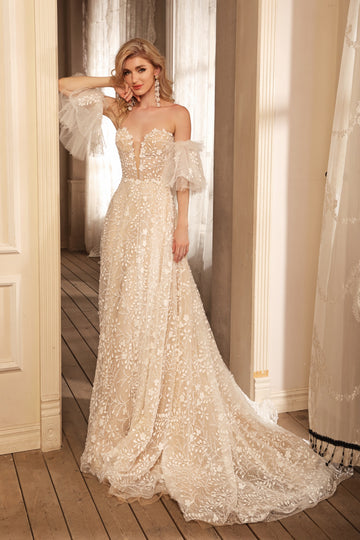Maintaining Color Consistency Throughout the Wedding Dress Production Process
Maintaining Color Consistency Throughout the Wedding Dress Production Process
Weddings are a significant event in many people's lives, and the wedding dress often stands at the center of this celebration. Among the numerous factors that contribute to a perfect wedding dress, color consistency is one of the most crucial. But how can color consistency be maintained throughout the wedding dress production process? This article explores the numerous steps involved in ensuring that the color of the wedding dress remains uniform, from design to final product.
The Importance of Color Consistency in Wedding dresses
Color consistency in wedding dress production not only enhances the overall beauty of the gown but also influences the sentiment associated with weddings. A mismatched tone can create disappointment and affect the bride's special day. The significance of maintaining color consistency can be reflected in various aspects, including:
- Visual Appeal: A consistent color enhances the overall aesthetic of the dress.
- Brand Reputation: Designers known for quality and consistency are more likely to receive word-of-mouth recommendations.
- Customer Satisfaction: Ensures that brides get precisely what they envisioned.
The Wedding Dress Production Process
The journey from sketch to the final gown involves several steps, each crucial for maintaining color consistency. Here’s an overview of the wedding dress production process:
| Step | Action |
| 1 | Design Phase: Selection of fabric and color swatches. |
| 2 | Sample Creation: Producing a sample to assess color fidelity. |
| 3 | Fabric Dyeing: Uniform dyeing processes are established. |
| 4 | Production Run: Bulk production of the dress begins with checks. |
| 5 | Quality Control: Final inspections ensure color matches. |
1. Design Phase
During the design phase, it’s essential to select the right fabric that aligns with the desired color. Designers should work closely with suppliers to ensure they receive color swatches that accurately represent the final product. In this stage, it’s wise to test color under different lighting conditions, as lighting can drastically alter the perception of color.
2. Sample Creation
A crucial step in establishing color consistency is creating prototypes. Sample gowns allow designers to evaluate the fabric color and texture before moving into full production. Brides can also see the gown in person, ensuring they’re happy with the color before proceeding.
3. Fabric Dyeing
The dyeing process is another vital step. Consistency in dye batches is key, as slight variations can produce unexpected results on the final product. Here are some suggestions for maintaining dye consistency:
- Work with reputable dyeing houses that follow strict quality controls.
- Always test dye lots before using them.
- Keep detailed records of dye recipes and procedures.
4. Production Run
Once the samples are approved, production begins. Here, color consistency should be maintained throughout the production run. It’s important to have regular checks for each batch produced to ensure that colors remain consistent. This transparency also fosters trust between the designer and the bride.
5. Quality Control
The final stage of ensuring color consistency is a thorough quality control process. This involves rigorous inspections where each gown is assessed not only for faults in construction but also for any discrepancies in color. Gowns should be compared to the approved sample to guarantee the color is faithful to what the bride has chosen.

Challenges in Maintaining Color Consistency
Despite careful planning, challenges can arise, impacting color consistency in the wedding dress production process:
- Variations in Fabric: Different fabrics can absorb dye differently, leading to variations in color.
- Lighting Changes: Color perception can change under varying light conditions, affecting how the final product is perceived.
- Dye Lot Variability: Colors from different dye lots can sometimes vary slightly.
Best Practices for Achieving Color Consistency
Here are some best practices that can aid designers in achieving color consistency during the wedding dress production process:
- Color Matching Tools: Use color matching tools like a spectrophotometer to ensure dye colors are consistent across batches.
- Standardized Samples: Keep standardized samples that represent a finalized color. This serves as a reference point during production.
- Training Staff: Ensure that all staff handling the production process are trained in identifying color discrepancies.
- Regular Feedback: Foster communication between designers, fabric suppliers, and production teams to address color concerns promptly.
Conclusion
Maintaining color consistency throughout the wedding dress production process is integral to achieving the ultimate vision for the bridal gown. From careful planning and design to thorough inspections during production, every step plays a pivotal role in achieving that delicate balance of color. While challenges may arise at various stages, implementing structured practices and quality control measures can significantly reduce inconsistencies.
As a bride, it’s essential to work closely with your designer and remain engaged in the process. Regular check-ins and open communication can lead to a more satisfying wedding dress experience. In doing so, you can ensure that on your special day, you walk down the aisle wearing a gown that perfectly embodies your vision, down to the color you’ve always dreamt of.
Remember, the beauty of a wedding dress lies not just in its design, but also in the perfect execution of every detail—color consistency being a vital part of that equation.
